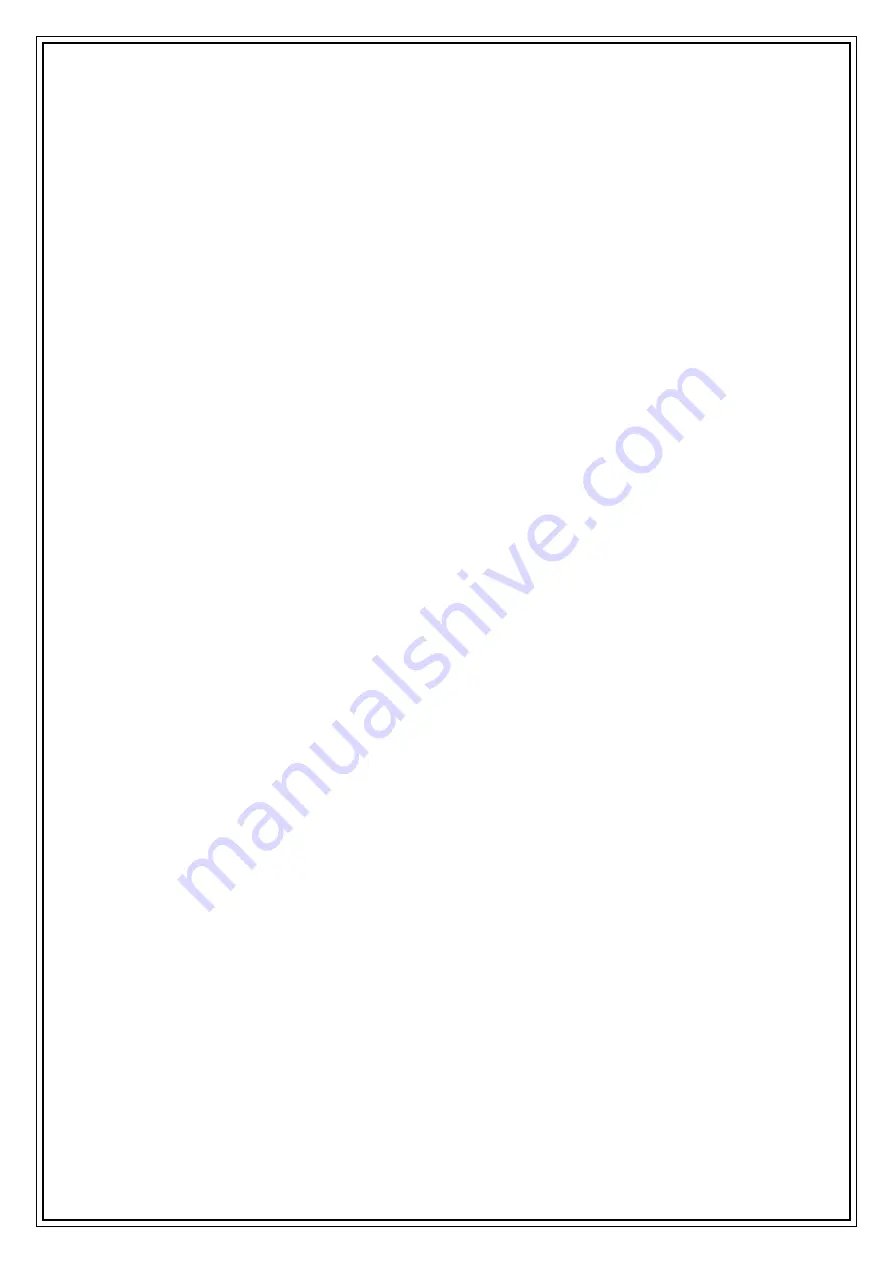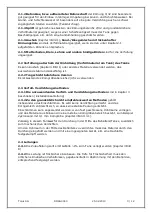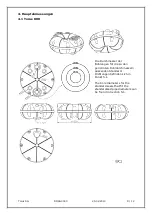
Torus SG
DOSG0040
25.02.2013
5 / 12
2.1.2 Concrete gravel, or recycled concrete rubble,
with a particle size of 0/32 mm
is particularly well suited for use in clay conditions with ground water and high water
tables. When ground water and high water tables are present, it is particularly important
to ensure good compaction, especially in the awkward places, e.g. hole in the middle of
the tank).
2.1.3
Stone chippings
are crushed rock particles between 2 – 32 mm in size and are
primarily suited as a backfilling material but due to their sharp edges, the tank must be
protected against damage, for example with a sand coating.
2.1.4
Excavated soil (Section 3, Figure 1), sand and gravel mixtures with mixed
particle sizes
can be used as a backfilling material only if they meet the criteria listed
under Section 2.1.
2.1.5
Top soil, clay, loam and other types of cohesive soil
are not suitable
backfilling materials.
2.2 Backfilling beyond the tank surface (filling material on the tank)
Excavated soil (Section 3, Figure 1) or other material can be used as long as it is
sufficiently stable and water permeable.
2.2.2
Base course for the version that is suitable for traffic
Size 2/45 particles must be used.
2.3 Backfilling and compaction methods
2.3.1 The backfilling and compaction methods to be used
are described in Section
3 (Installation instructions)
2.3.2 Methods to be avoided
include adding water. Adequate compaction is not
achieved and the mixture of particle sizes comes together in such a way that the packing
is unstable.
Water may only be added if the material is in a cavity that is nearly completely closed
and the material being used is a fine sand with a small particle size, for example fine
sand with a particle size of 0.1 mm. (Section 3, Figure 13.1)
This is
only
permitted for the hole in the middle of the container/tank, in addition to
mechanical compaction.
In order to compact the hole in the middle of the container, the material must be filled
through the hole and tightly compacted using a suitable device, such as a roof batten.
2.4 Pipes
2.4.1
The inlet supply line should be laid with a downward gradient to the tank greater
than 1% (Section 3 Figure 8)
2.4.2
This supply line must be installed so it is protected from frost. The depth for frost
protection is to be determined by the regional weather conditions, and, if necessary, in
coordination with local authorities.






























